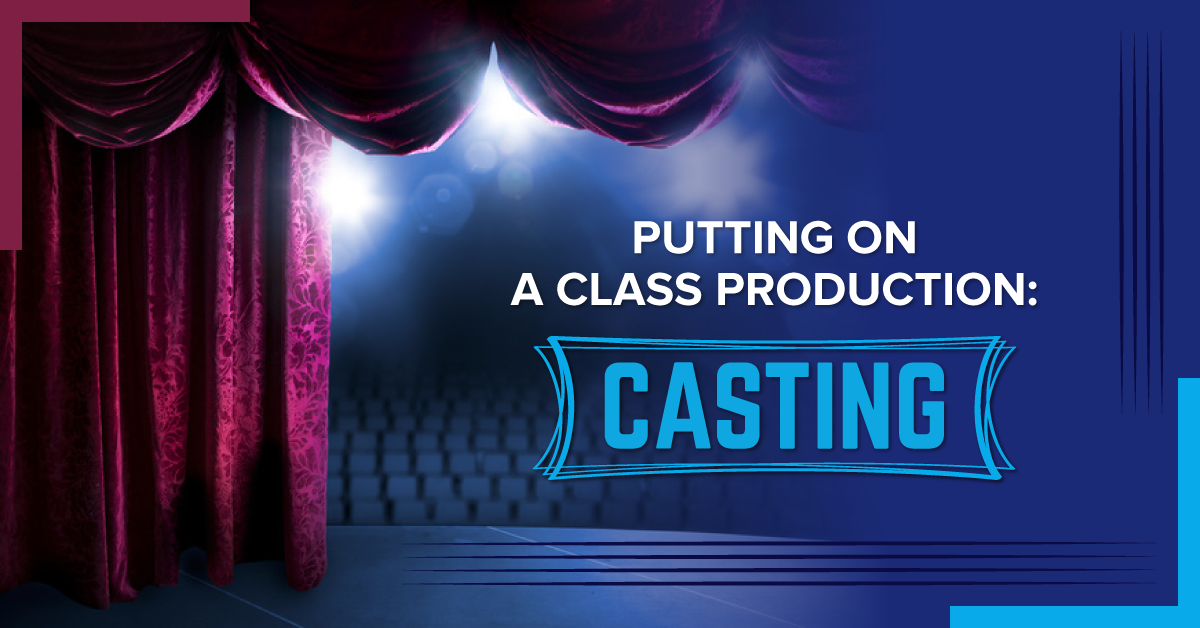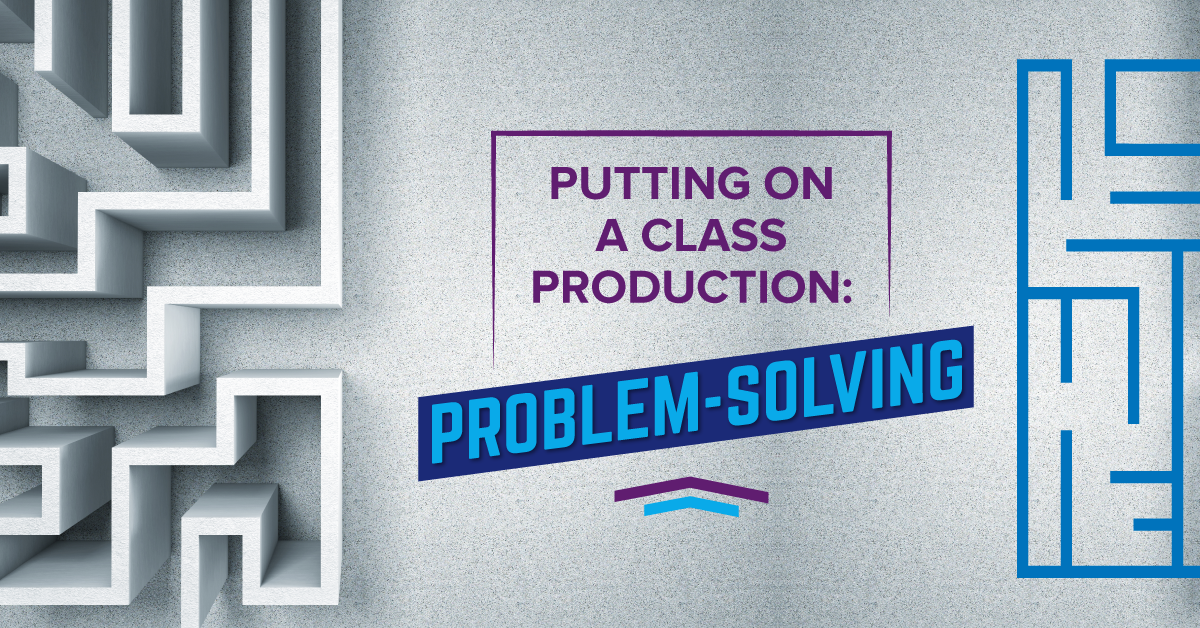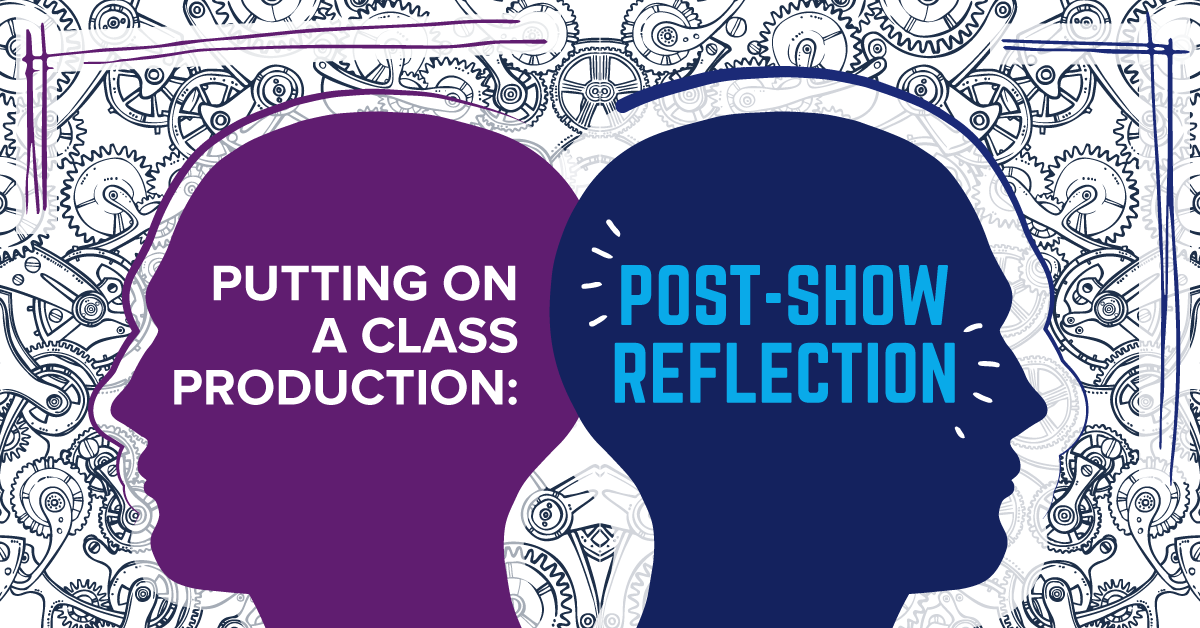Horror Movie 101: Failing Can Be Deadly by Steven Stack is a chilling mix of horror and humor - perfect for student performers and the spooky season! 👻
Putting on a Class Production Part 3: Casting
**This is the third part of a five part class production series. Check out Part 1: What to Produce? and Part 2: Who Does What?.
Things are moving along well with your class production. You’ve decided what exactly your production will be, and you’re in the process of figuring out who will do what in terms of offstage roles. Now it’s time to think about what role(s) your students will perform onstage. Every production needs some sort of performance aspect, of course, and your students will be eager to get their production cast and start working on their roles.
The first thing that comes to mind when casting a production is holding auditions. Students prepare a piece (usually a monologue that is similar in nature to the show you are producing, as well as an appropriate song if the show is a musical) and present it to the audition panel – the director and stage manager, as well as any other appropriate staff (musical director, choreographer, producer, etc.).
Consider whether you want to hold open or closed auditions. Closed auditions are when students audition privately for the audition panel, one after another in a separate room from the rest of the class. Open auditions are when the full class is present in the room while each student presents their audition. There are advantages to both methods.
Open auditions are very transparent. Students can see who is well prepared and confident, and it gives them the chance to prove that they can perform under pressure. Open auditions also give you the opportunity to see how students support each other and how they behave when they aren’t the immediate focus of your attention.
Closed auditions help students feel less nervous because they are only performing for a small group of people. They may reduce stress for students who are worried about making a mistake or looking silly in front of their peers.
However, there are some other methods of casting to consider. For example, cold reading (or “sight reading”) is where actors read aloud from a script, scene, or text with little to no preparation. You can read about the pros and cons of cold reading here, and help your students practice cold reading using this exercise. Cold reading is a great way for students to show what they’re capable of without the pressure of having to select and prepare a monologue.
An interesting exercise you may also want to try with your class is “dream casting.” Either individually or in small groups, students take a copy of the dramatis personae (character list) and cast their classmates into the role(s) they think their peers would be best suited for, using their knowledge of their classmates’ skills and abilities. They write the name of the student next to the role. It’s important for your students to consider their choices critically and not simply cast their friends into the “best” roles. Prior to “dream casting,” you may want to have your students include a pitch to the class of what role(s) they think they would be best suited to, or what role(s) they’d most like to play, and why. You can then take the sheets, compile the information, and cast the show using the choices that the students made.
Alternatively, you may want to ask the full class to come to a consensus about casting the roles. This is easiest with a smaller class, but no matter what size class you have, it can be an interesting challenge. Some topics to discuss with your class on the topic of dream casting include:
- What criteria do you consider when suggesting certain students for certain roles?
- How can students make suggestions for casting in a thoughtful and tactful manner?
- Is it possible to cast a show in an unbiased way?
- If there is a disagreement regarding casting, how do you overcome the disagreement? (I have colleagues who have experienced this – the director wants to cast a certain student while the musical director and/or choreographer want to cast someone else.)
- What other challenges may arise when trying to cast a show? For example, what if you have too many actors or not enough actors?



